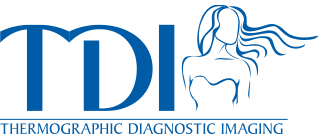Thermography does not give off any harmful radiation, which is known to cause cancer. Radiation from routine mammograms poses significant cumulative risk of initiating and promoting breast cancer (1-3). In fact, a mammogram results in 1000-fold greater radiation exposure than a chest x-ray (2). Additionally, each RAD (radiation absorbed dose) of exposure increases breast cancer risk by one percent annually (4), an extremely worrisome statistic for premenopausal women whose breasts are more sensitive to radiation.
According to the 1998 Merck Manual, for every case of breast cancer diagnosed each year, five to ten women will needlessly undergo a painful breast biopsy. Statistically then, each woman who undergoes annual screening mammograms for ten years has at least a fifty percent chance of undergoing a breast biopsy. Breast thermography has been researched for over forty years with a database of over 1/4 million women. There are over 800 peer-reviewed thermographic studies. This research has concluded that a persistently abnormal Thermogram indicates a 22-fold increase in the risk of developing breast cancer. Because of the safety of the test, thermography can be performed on any individual of any age, including those who are pregnant or breastfeeding.
Breast thermography is a non-contact test. Conversely, mammography involves placing the breast between two plates and subjecting the breast to painful compression. The recommended force used to compress breast tissue in a mammogram is 300 Newtons, the equivalent of placing a fifty-pound weight on the breast. In an article written in 1928 (5), physicians were warned to handle “cancerous breasts with care – for fear of accidentally disseminating cells and spreading cancer.” In 1992 (6) an opinion was offered that such compression might lead to distant and lethal spread of malignant cells by rupturing small blood vessels in or around small, as yet undetected, breast cancers.
In 1995, the Lancet, a prestigious British medical journal, reported that “since mammographic screening was introduced in 1983, the incidence of ductal carcinoma in situ “DCIS”, which represents 12% of all breast cancer cases, has increased by 328% and 200% of this increase is due to the use of mammography.
Breast thermography has been determined to have an average sensitivity and specificity of 90%, and when used as part of a comprehensive, multi-faceted approach can lead to early detection of 95% of early-stage cancers. This increases the long term survival rate by as much as 60%.
Bibliography
- (1-6) Cancer Prevention Coalition
Dangers And Unreliability of Mammography: Breast Examination is a safe, Effective, and Practical Alternative - Samuel S. Epstein, Rosalie Bertell, and Barbara Seanman
- International Journal of Health Services, 31(3):605-615, 2001

